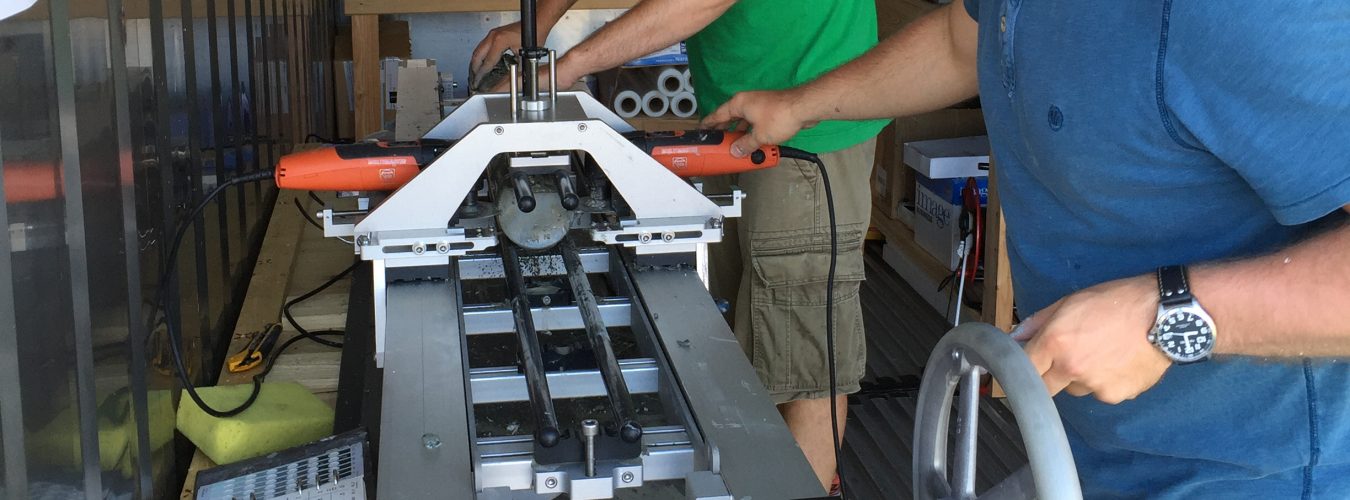Ship Remains Identified in the St. Mary’s River
Working and pleasure boats have plied Maryland waters for centuries. No one knows how many wrecked or abandoned ships lay hidden In Maryland’s rivers and bays. One suspected underwater site that was first mapped in 1994 gave up some of its secrets this summer. Scott Tucker, archaeologist and doctoral candidate from University of Southampton in the United Kingdom, has been exploring what may be the remains of a ship in the St. Mary’s River, with the Maryland state museum, Historic St. Mary’s City.
Ten feet beneath the surface, Tucker and a crew of volunteer divers found a heavy concentration of stones in an oval-shaped area that was over 50 feet long. “The shape suggested that the site is the remains of a ship. Now we know the stacked, rounded cobble stones were used as ballast, since there is an order to them. The larger cobbles tend to be at the top of the ballast, helping to fix the smaller stones in place below,” Tucker reports. “You can see where they were placed side by side by someone over 300 years ago. And these stones are unique. They are not typical of Maryland. Instead, we found a possible source on the North Devon coast of England, a geological feature called the Northam Pebble Ridge.” The size of the ballast distribution suggests a ship of roughly 100-120 tonne burden, an average sized ship for trans-Atlantic trade during this period.
The archaeologists were not totally surprised to find that no timbers or ship architecture were uncovered, given the harsh environment of the small test areas, but the few artifacts that were recovered offer more clues about the site. Tobacco pipes and Dutch red bricks excavated in the 1990s suggested the remains might date to the latter half of the 17th century. “This year we found a ceramic fragment in between the ballast stones that is part of a North Devon Sgraffito jug. Tucker said, “The decoration is distinctive and dates it to 1650-1700, supporting our initial dating of the vessel. It was fired in a kiln quite close to the probable source of the ballast!” Direct trade from North Devon to Maryland is well documented throughout the second half of the seventeenth century.
A shaped wooden fragment, possibly a piece of a ship’s bilge pump, was also recovered. Researchers determined the wood is elm and hope further research may reveal more about its source. Discovery of this well preserved piece gives hope that portions of the hull survive elsewhere under the ballast.
Since few artifacts were found and the remains are close to what was the 17th-century shoreline, researchers suspect the ship was abandoned rather than wrecked. Cargo and items of value would have been removed. “While a wreck filled with goods would be more exciting, there is still much we can learn from the remains of this ancient abandoned vessel, “ HSMC’s Director of Research Henry Miller, Ph.D. commented, “The findings strongly suggest that this is indeed a 17th-century ship. Given its likely English origin and size, it was probably a tobacco ship that carried settlers and goods to Maryland and tobacco back to Europe. Such vessels were the vital link for the early Chesapeake economy. While thousands of vessels engaged in the Tobacco Trade during the colonial era, this is the first 17th-century one to be identified by archaeologists. Scott’s work gives us another hint of the vast store of archaeological evidence and historical knowledge that lies hidden under the waters of Chesapeake Bay.”
State Underwater Archaeologist Susan Langley, Ph.D. remarked on the superior quality of Tucker’s research design and commended his level of effort. “We are looking forward to reading his report and reviewing the evidence,” said Langley,
Tucker’s work was funded by the Elsie Carper Charitable Foundation with support from University of Southampton, Historic St. Mary’s City Commission, the Institute for Maritime History, and the Maryland Historical Trust.
For more information about Historic St. Mary’s City and archaeology on the site of Maryland’s first capital, visit www.stmaryscity.org or contact the museum at 800-762-1634or info@stmaryscity.org.
smrarchaeology’s photostream on Flickr.
Photos from the 2013 fieldwork season at Historic St. Mary’s City





















